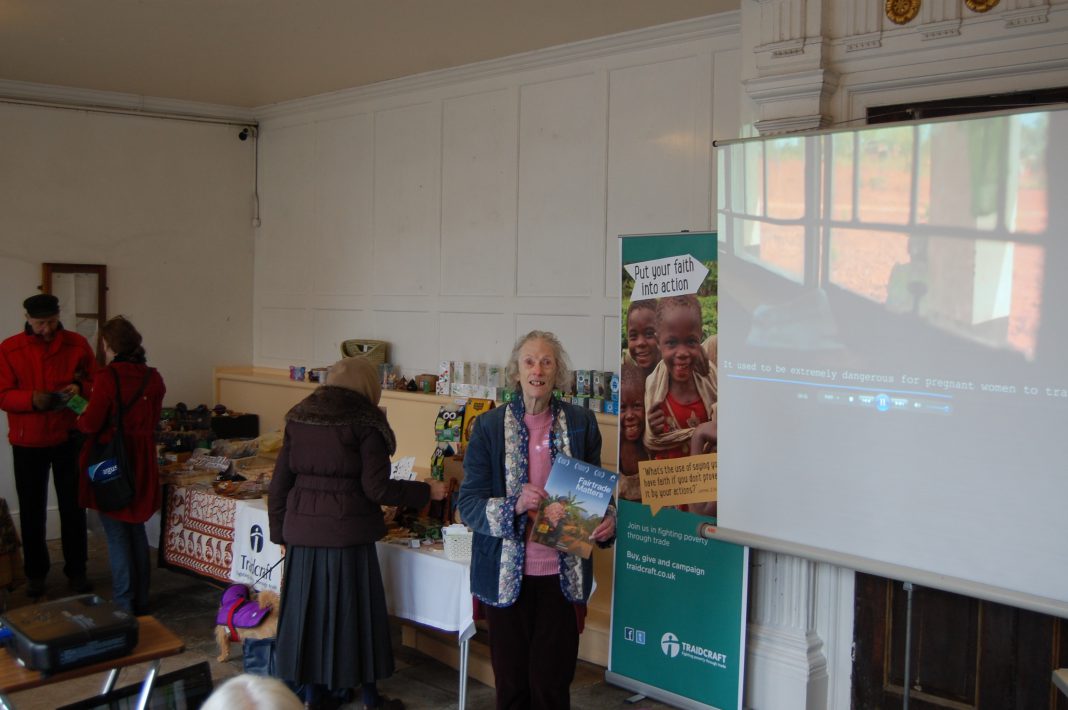How many of us know that Rye is a Fair Trade Town, or that this is Fairtrade Fortnight (from February 23 to March 8), asks Kenneth Bird. There were signs on some lampposts for sure, advertising an event at the Butter Market, Rye Town Hall and I went along last Saturday, March 1, in an off-putting drizzle to find two or three stalls and a friendly welcome with a hot drink available, but not a lot to tempt the wallet out of the pocket. Stalwart supporters Christine and Michael Ward from Hastings were manning their Traidcraft stall, offering an assortment of handmade and eco-friendly products made from natural materials, but also rather unexpected things like washing up liquid.
An adjacent display featured mint chocolates, Easter eggs and bamboo socks -all the fashion rage, apparently. “I’m wearing them and they’re fantastic” said one helper. Somehow, despite the good intentions of the local volunteers, this did not altogether seem the most effective way to make, as Traidcraft says: “a world free from the scandal of poverty, where trade is just and communities can flourish”. I decided to find out more.
Rye became a Fair Trade town following a council resolution in 2008. It was one of a growing number of towns across the UK to embrace the campaign. Basically, the aim is to ensure that farmers and small scale producer groups in the developing world receive a fairer return for their produce than that offered by the global distribution system, dominated by the major retail players. In return for a premium price which funds community developments, the producers undertake to pay fairer wages with better working conditions for their employees. Traditional targets are plantation products such as tea, cocoa, coffee, sugar and bananas, but the list is now much wider and includes domestic and industrial consumables.
The event last Saturday sold about £250 worth of goods, but it relied heavily upon members of Churches Together both for advertising and attendance. Otherwise in the town there is very little to mark this international awareness fortnight. For most town retailers who regularly stock Fairtrade products, and some of the local hotels and caterers, it seemed just business as usual, responding to customer demand, rather than active participation. The Tourist Information Centre in Lion Street had a special window display but most High Street shop-keepers appeared quite unaware of the promotion opportunity.
“Fairtrade town status requires an ongoing commitment to meet certain targets of community support, product availability and awareness”, said local organiser Ann Hamilton. It is evident that Rye is struggling to maintain this status. The objectives of the Fairtrade Foundation are praiseworthy, but the message needs reinforcement if it is to be made effective. We may be getting used to checking whether a retailer supports local business and farmers. Now we are being urged to look for the Fairtrade logo and ask ourselves before we purchase: “Is this Fairtrade produce?”



